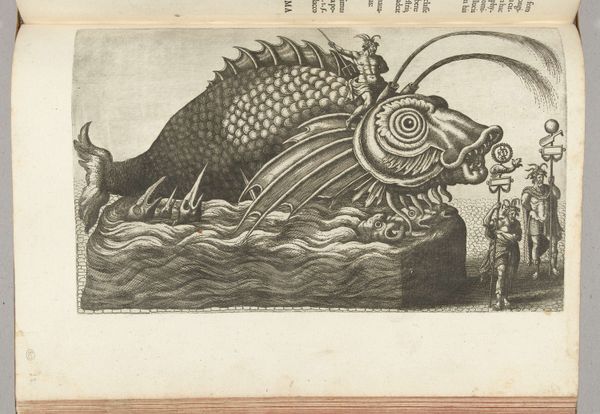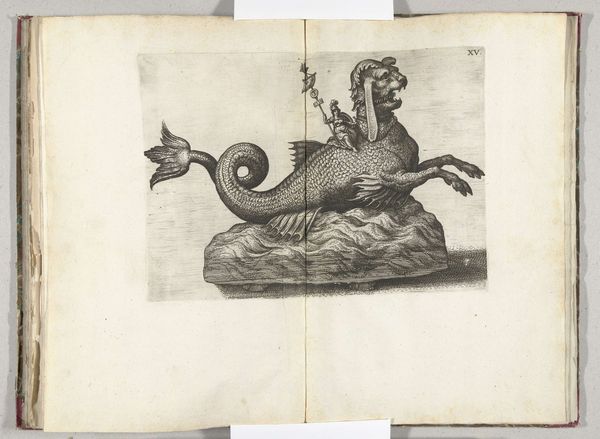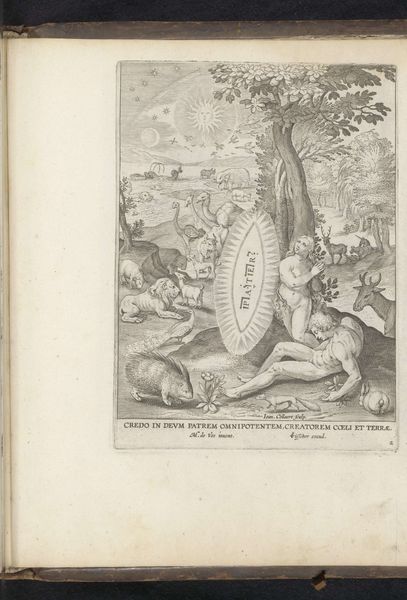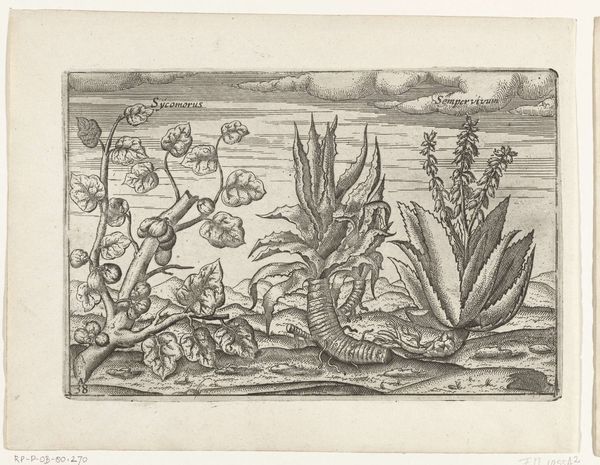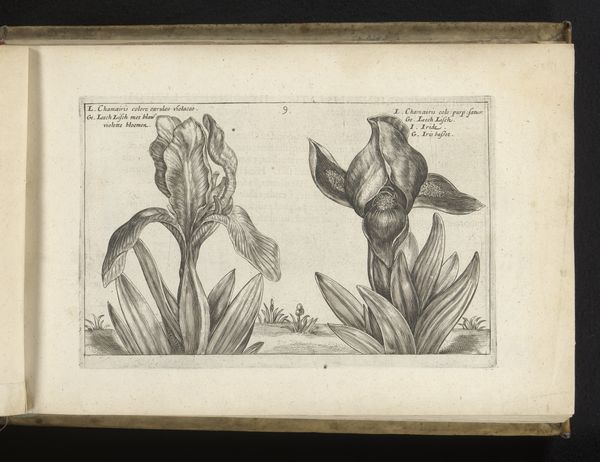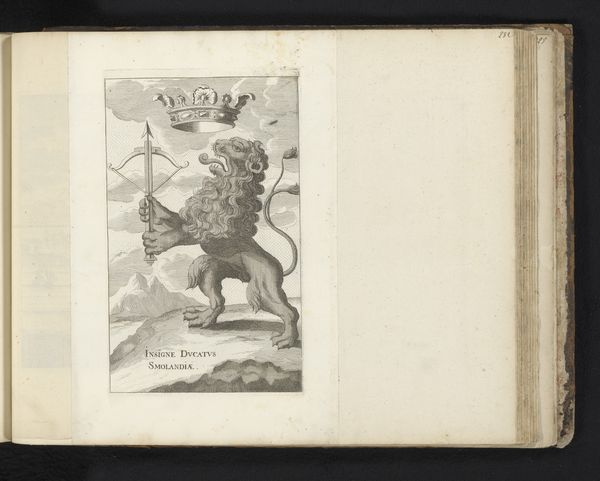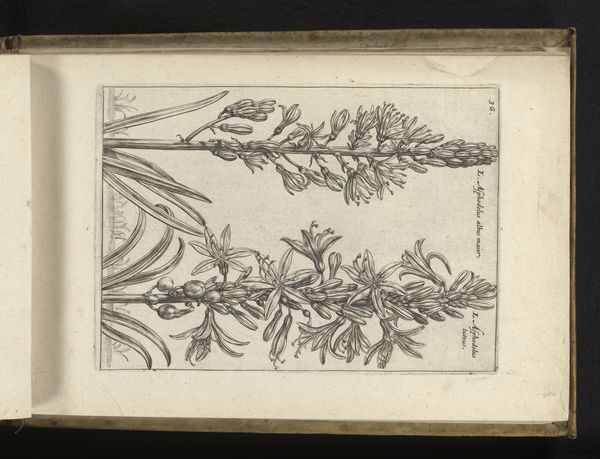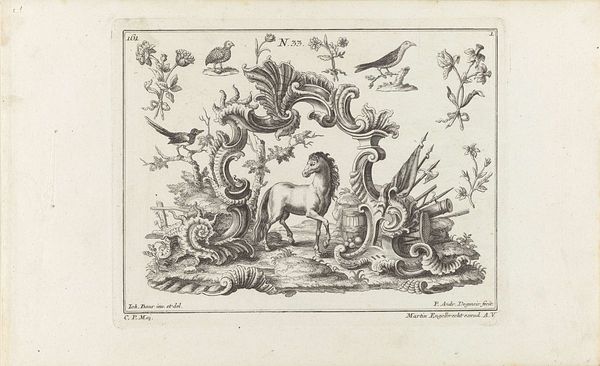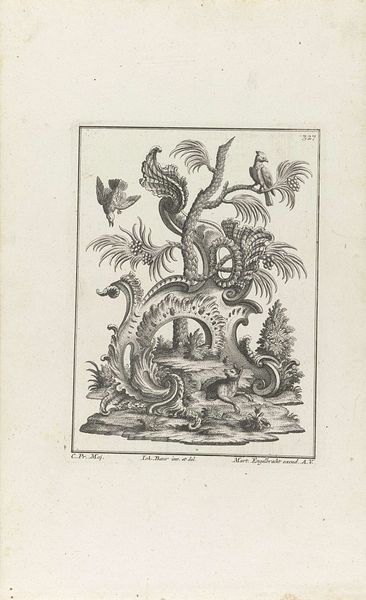
print, paper, engraving
#
allegory
# print
#
mannerism
#
figuration
#
paper
#
11_renaissance
#
coloured pencil
#
mythology
#
engraving
Dimensions: height 182 mm, width 330 mm
Copyright: Rijks Museum: Open Domain
Editor: Here we have a Mannerist print from 1582, titled "Het beeld van de walvis met Neptunus," which translates to "The image of the whale with Neptune." It looks like an engraving. The detail is astonishing! What particularly strikes me is how Neptune seems to be casually riding this enormous, menacing whale, seemingly in full control. How would you interpret this work? Curator: Let’s consider the production of this print. The engraving technique allowed for mass production of imagery, which democratized mythological narratives. Mannerism's focus on artifice and exaggeration subverts the whale's potential naturalism. We see the material outcome of labour intended to propagate not just mythology, but also perhaps a subtle display of power through classical allusion, made available for purchase and display. The print itself becomes a commodity, reflecting both artistic skill and wider cultural values. What about the paper it's printed on? Editor: It appears to be fairly typical paper for the time. Thinking about your point, the very act of imprinting this scene onto paper – making it repeatable and distributable – does seem to dilute any potential grandeur or inherent 'power' of Neptune himself. It is literally reduced. Curator: Precisely! And the contrast between the ephemeral nature of print and the supposed timelessness of mythological narratives raises intriguing questions about value and permanence. Think about who commissioned, made, and consumed these prints. They're all critical. The creation and consumption of this image reflect the broader socio-economic factors at play, right? Editor: That's a compelling way to look at it. I had initially focused on the symbolism and mythological elements but neglected the more concrete realities of its production and consumption. Thank you! Curator: Looking at art from the material point of view allows us a wider perspective, where we understand how the physical production of images reflect not only beliefs and historical context, but material realities of their time.
Comments
No comments
Be the first to comment and join the conversation on the ultimate creative platform.
